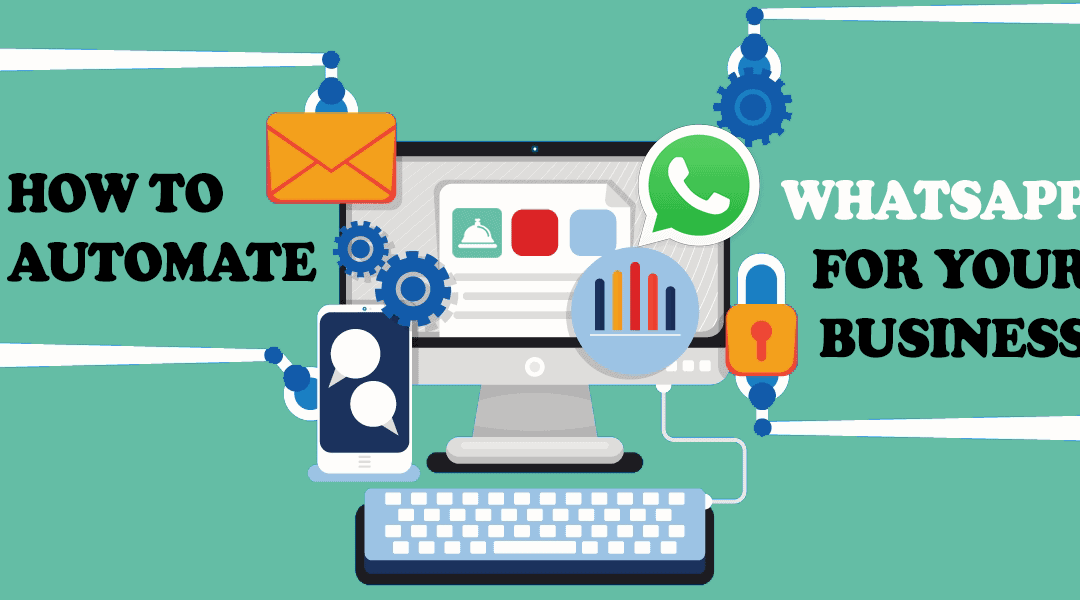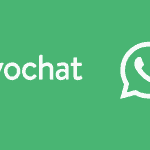As shown in previous articles, WhatsApp is currently the most widely used messaging app in the world and is a key communication medium for businesses that want to develop and maintain a long-term relationship with their customers.
In recent years, WhatsApp has turned into a real marketing tool, as it offers many advantages in customer-business interaction. For example, it provides speed in communication, greater confidence with the company or the possibility to send multimedia messages.
That’s why many users nowadays expect to be able to communicate with companies via WhatsApp, so they can request information about products or services, ask for assistance or book an appointment.
Businesses that want to receive massive amounts of inbound messages from WhatsApp will need to configure the popular messaging app so that they can automate conversations and thus cater to their target audience.
In this regard, the official WhatsApp Business API has been introduced, which allows you to connect your WhatsApp number to external platforms, such as Callbell, in order to efficiently manage and organize WhatsApp conversations.
Using WhatsApp to increase your company’s sales can be a very effective strategy, but to do so you’ll need to have the right tools, namely a proper CRM that allows you to manage a sales team and automate the process.
When communicating via WhatsApp, your sales team will need to know how to interact with the customer in an immediate, empathetic way and keep communication simple and concise, so they can maximize the lead-to-customer conversion rate.
A first way to automate WhatsApp for sales is to create quick responses, which means saving preset responses that will be sent to users in just a few clicks, saving the sales team time.
Or you can set up auto-replies, by having WhatsApp send a response to you automatically when you are not available on the app, trying to capture as much information from you as possible.
Another solution could be to develop a chatbot that can show the product catalog, ask about the customer’s intentions, offer assistance in choosing a product, or even enable instant check-out.
One last alternative to automate WhatsApp is automatic routing which allows you to manage a first part of the conversation through automation, and then leave the management to a human operator
Below we see in detail the various solutions to automate WhatsApp.

WhatsApp Business allows you to create quick response templates that allow your business to speed up responses to common incidents that arise during user interaction.
To activate them, just follow these steps:
1) Open the WhatsApp Business app, click More Options -> Task Tools -> Quick Replies.
2) Click Add.
3) Click Message to create the message you want.
4) Click Quick Connect to set the keyboard shortcut for quick response.
5) Click Save.
Note: Media files are not supported in Web or Desktop Quick Responses.
You can then set up predefined responses to be sent to the user by typing “/” or tapping Attach -> Quick Replies. One tip is to correctly specify company data, such as address and opening hours, as these are automatically included in the quick answers.

Auto-responses consist of messages that are automatically sent to the user in two basic cases:
a) At the first interaction, with the welcome message;
b) If the operator is absent, with the away message.
The welcome message consists of an initial message that is sent to the user as soon as they enter into communication with the company. They can be activated through the WhatsApp Business app like this:
1) Click More Options > Activity Tools -> Welcome Message.
2) Enable Send Welcome Message.
3) Click Welcome Message to edit your welcome message, then click OK.
4) Click Recipients and choose one of the following options: everyone, everyone not in address book, everyone except the people you select, or send only to the selected contacts.
8) Click Save.
The away messages feature, on the other hand, allows you to send automatic messages at times when you’re offline, here’s how you can enable them in the WhatsApp Business app:
1) Click More Options > Activity Tools > Away Message.
2) Enable Send away message.
3) Under Away Message, click the message to edit it, then click OK.
3) Click Time to set your away message. Choose from the following options: Send Always, custom time, outside of business hours (option only available if you have set up business hours in your business profile)
4) Click Recipients to specify who should receive the away message. Choose from the following options: everyone to send it to everyone, everyone not in the address book, everyone except the clients you select or send only to the selected clients
5) Click Save.
Note: Your device must have an active Internet connection to send away messages.
To develop a chatbot on WhatsApp, your company will need to take advantage of the WhatsApp Business API and rely on external platforms, which allow you to create bots that can manage a chat with the user.
There are many platforms used for this type of automation, such as Manychat or Landbot. Just give them permissions to request the WhatsApp Business API and connect your WhatsApp number to start creating a chatbot.
In this way it will be possible to automate the process of sales or support on WhatsApp through the chatbot, which in a totally autonomous form will lead the conversation towards the desired result.
One of the main benefits of a chatbot on WhatsApp is to be able to communicate with the customer base in a timely and asynchronous manner, i.e. at the most convenient time for the customer.
The chatbot can connect with customers without forcing them out of an app they use on a daily basis and provide a personalized experience with each interaction thanks to data collection.
However, a chatbot is lacking in empathy and is difficult to implement given the complexities that can arise during a sale or support request. Therefore, a new alternative needs to be found that can combine chatbot automation with human intervention.

If your business wants to automate WhatsApp in a professional and structured way, through Callbell it can start managing entire sales or support teams to respond to WhatsApp, Facebook Messenger, Instagram Direct and Telegram conversations.
Through Callbell’s automatic routing you will be able to automatically distribute new incoming chats to the different teams in your account, regardless of whether they come from different messaging channels.
An automatic message will give the user a choice, with which the automatic routing will allow to automate the initial part of the conversation and, at the same time, distribute it to the relevant team that will respond and manage the lead in a direct and empathetic way.
Follow this guide to configure automatic routing in your Callbell account
This will allow your business to automate the chat while maintaining human contact with customers or prospects. Learn more about our chat management platform by clicking here.
Frequent Questions
How can I automate WhatsApp?
Using WhatsApp to increase your company’s sales can be a very effective strategy, but to do so you’ll need to have the right tools in place, namely a proper CRM that allows you to manage a sales team and automate the process.
You can automate WhatsApp for sales by creating quick replies, setting up automated replies, or developing a chatbot. A great alternative is to set up automated routing that allows you to handle an initial part of the conversation through automation, and then leave it to a human operator.
What is Callbell's automatic routing?
Automatic routing is a system to automatically distribute new incoming conversations to the different teams in the account, regardless of whether they come from the different messaging channels.
An automatic message will give the user a choice, with which the automatic routing will allow to automate the initial part of the conversation and, at the same time, distribute it to the relevant team that will respond and manage the lead in a direct and empathetic way.
About the author: Hello! I am Alan and I am the marketing manager at Callbell, the first communication platform designed to help sales and support teams to collaborate and communicate with customers through direct messaging applications such as WhatsApp, Messenger, Telegram and Instagram Direct




